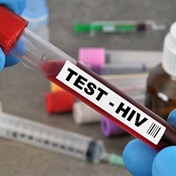A recent study shoed that traditional healers who received HIV training, improved and retained their knowledge of HIV/Aids/TB, even seven to nine months after the training.
The study was conducted by the Human Sciences Research Countil of South Africa and presented in a poster session at the XVI International AIDS Conference, which takes place in Toronto, Canada this week.
Before the training programme, most healers had correct knowledge of the major HIV transmission routes (multiple sexual partners, blood contact, re-using needles or razors), prevention methods (condom use), and that antiretroviral treatment has to be taken for life. However, their knowledge was poorer on other HIV transmission routes (breastfeeding, oral sex and dry sex). Their knowledge of HIV/Aids myths, such as having sex with a virgin, was also poor. This was also the case concerning their knowledge of the nature of HIV/Aids, for example, that someone with HIV could still look healthy, or that there was no cure for HIV/Aids.
Sample group
The study involved involved 233 traditional healers, (161 in an experimental group and 72 in a control group), 19 nurses and 33 community health workers. The experimental group received HIV training whereas the control group only received information booklets. The healers were assessed before the training and again seven to nine months later.
The results showed an attitude change in nurses and healthcare workers towards traditional healers, and the discussions during training helped to promote understanding among the groups. Encouragingly, 99.1% of traditional healers in the experimental and 100% in the control group indicated that they are prepared to work with medical health practitioners.
Before training started, HIV knowledge was not significantly different between the experimental and the control group. Following training, the experimental group had significantly increased HIV knowledge as compared to the control group, and after training, almost all traditional healers approved of distributing condoms to clients. They also reduced risk practices such as performing incisions or scarifications. Only 2% had used the same razor blade for scarifications in the three-month period before follow-up and only 5% used an enema on patients without sterilisation during the same period.
The majority of the traditional healers in both groups could be classified as diviners (59% in the experimental and 39% in the control group), followed by herbalists (15% and 29% respectively) and diviner-herbalists (13% and 22% respectively).
Conducted in high-risk area
The study was conducted in KwaZulu-Natal (KZN), which is at the epi-centre of the epidemic with an antenatal sero-prevalence of 39.1%. George Petros, a researcher at the Human Sciences Research Council of South Africa, presented the findings.
The researchers developed training material, a clinical referral system for traditional healers, and methods to monitor and evaluate the effectiveness of interventions by traditional healers.




 Publications
Publications
 Partners
Partners














